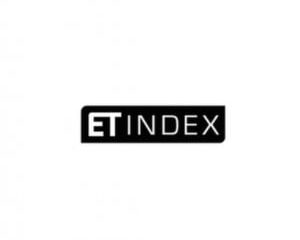

Environment
Carbon Context – why momentum is building whatever comes out of Paris COP21
2014 saw carbon risk move ever higher up the agenda for investors with the launch of the Montreal Pledge by the United Nations backed Principles for Responsible Investment. The Montreal Pledge provides investors with a platform for commitment to the measurement and public-disclosure of the carbon footprints of their investment portfolios on an annual basis, with a view to reducing them over time. At the time of writing there over 80 signatories representing over $1 trillion in assets under management. Sam Gill, CEO of ET Index writes.
In parallel, the Portfolio Decarbonisation Coalition was launched by the United Nations Environment Programme Finance Initiative (UNEP FI) to mobilize a critical mass of institutional investors committed to gradually decarbonising their portfolios. Institutional investors have committed to decarbonising over $100 billion of equity portfolios.
It is reasonable to assume that such voluntary initiatives will, over the course of the next decade, be accompanied by mandatory regulatory requirements as national governments seek greater transparency from investors and their agents over whether and indeed how Environmental, Social and Governance (ESG) analysis is being incorporated into the portfolio construction process.
All this is occurring against the backdrop of a growing global fossil fuel divestment campaign, with over 440 institutions pledging to drop fossil fuel holdings by September 2015. The primary driver for this action comes from the risk that company reserves will become stranded as governments move to limit rising global temperatures.
2014 also saw the United States and China, the world’s largest polluters and economies, agree an historic deal to cut their emissions, while the European Union announced that it would reduce its emissions by 40% by 2030.
Action at the national, city, state and region level is also growing rapidly. Since January 2012, the number of carbon pricing instruments already implemented or scheduled for implementation has almost doubled, jumping from 20 to 38. Moreover, the share of emissions covered by carbon pricing has increased threefold over the last decade. As of 2015 there are now 39 national and 23 sub-national schemes putting a price on carbon. Together, carbon pricing instruments cover about half of the emissions in these jurisdictions, which translates to about 12 percent of global emissions.
2015 has seen countries announce in increasing numbers their Intended Nationally Determined Contributions (INDCs), their pledges to limit emissions in the run up to the UN Climate Change Conference in Paris in December. As of September, 33 submissions have been received by the UNFCCC, reflecting 60 countries (including the European Union member states), and covering around 66% of global emissions.
Meanwhile, the Governor of the Bank of England, Mark Carney, has become increasingly vocal on the issue of a carbon assets becoming stranded. In September 2015 warning that investors face “potentially huge” losses from climate change action that could make vast reserves of oil, coal and gas “literally unburnable”.
Perhaps the most significant event of 2015 was the introduction of la loi transition énergétique pour la croissance verte in France which has made it mandatory for institutional investors to begin disclosing the full carbon footprint of their portfolios with a view to reducing their exposure to carbon over time from 2016. Other countries may well follow suit.
What does all of this mean? Regardless of whatever comes out of Paris COP21, the cost of carbon is increasing.


 Environment9 months ago
Environment9 months agoAre Polymer Banknotes: an Eco-Friendly Trend or a Groundswell?

 Environment10 months ago
Environment10 months agoEco-Friendly Home Improvements: Top 7 Upgrades for 2025

 Energy12 months ago
Energy12 months agoA Closer Look at The Rapid Growth of Solar Energy in Ireland

 Features8 months ago
Features8 months agoEco-Friendly Cryptocurrencies: Sustainable Investment Choices

























